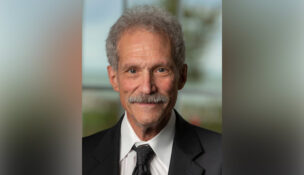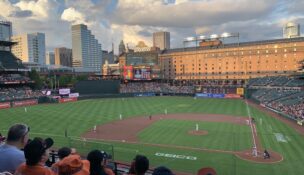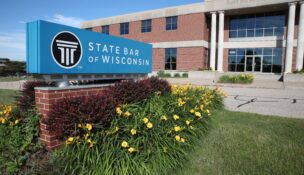View from around the state: US high court has chance to reject gerrymandering
By: Associated Press//June 5, 2017//
View from around the state: US high court has chance to reject gerrymandering
By: Associated Press//June 5, 2017//
My, my, how time flies when we are having redistricting fun.
Just look at the calendar — it’s 2017, and another U.S. Census is just three years down the road. And that means Wisconsin will have another chance to redraw its electoral maps for congressional and statehouse districts.
That’s probably a good thing, because the fight over the last redistricting, done after the 2010 Census, is still working its way through the courts — and has finally reached the U.S. Supreme Court.
The Wisconsin case poses, for the first time, the question of whether “packing” and “cracking” voters into districts for purely partisan advantage violates the U.S. Constitution.
“Packing” is the term for lumping as many voters who have historically favored one political party into a district in order to keep those voters from influencing the results in a nearby place, where the competition might be stiffer,
“Cracking” refers to drawing the lines of a district to spread voters who favor one party over a wide area, thus lessening their influence.
Both techniques are used by political parties as they draw gerrymandered maps with the sole intent of maximizing their chances of gaining seats and political power.
It’s not new — both Democrats and Republicans here in Wisconsin, and elsewhere, have for decades drawn political maps to try to win as many districts as possible. The goal here, of course, is to control Congress and state legislatures.
It’s about power — political power: Keeping control of statehouses and congressional districts, undermining competition and taking away voters’ right to choose their elected representatives.
In the last electoral redraw — the one that is being taken up by the Supreme Court — Republicans discarded the historic district lines once found in Racine and Kenosha counties and lumped the cities of Racine and Kenosha into the same state Senate district. This both set up one “safe” Democrat-leaning district and lessened voters’ influence over which party is most likely to win seats in two other districts.
Over the years, the U.S. Supreme Court has taken up various cases looking at race-based redistricting. In the most recent, which took place just last week in North Carolina, the court rejected two congressional districts after finding the districts had been packed mostly black voters in order to minimize their influence in other places.
But, until the high court had agreed to consider whether the Wisconsin Assembly’s district maps violate the equal-protection clause of the 14th Amendment, it had been reluctant to take up questions concerning redistricting done purely for partisan purposes.
Over the years, political parties have gotten better and better at gerrymandering to their own advantage, thanks to improved voter data and computer technologies that allow for better mapping.
And they have gotten bolder about their power-grabbing designs. A recent Chicago Tribune article noted that in the North Carolina dispute, only 30 percent of the state’s voters were registered as Republicans. Even so, the GOP holds 10 of the state’s 13 congressional seats. As GOP lawmakers drew up their maps, one was quoted as saying the goal should be to stack 10 districts to favor Republicans “because I do not believe it’s possible to draw a map with 11 Republicans and two Democrats.”
We would hope the U.S. Supreme Court takes the Wisconsin case as an opportunity to reject the idea that politicians can — or should — use redistricting for their own partisan political gain by choosing their voters. Instead, we hope the court affirms the idea that it is the voters who should be doing the choosing.
Electoral maps should be drawn up to take into account communities of interest, geographical proximity, existing political boundaries, social and economic connections — and not the tortured, byzantine, stretched shapes and disconnected areas that politicians have devised to grasp political advantage.
Legal News
- State Bar leaders remain deeply divided over special purpose trust
- Former Wisconsin college chancellor fired over porn career is fighting to keep his faculty post
- Pecker says he pledged to be Trump campaign’s ‘eyes and ears’ during 2016 race
- A conservative quest to limit diversity programs gains momentum in states
- Wisconsin prison inmate pleads not guilty to killing cellmate
- Waukesha man sentenced to 30 years for Sex Trafficking
- 12-year-old shot in Milwaukee Wednesday with ‘serious injuries’
- Milwaukee man convicted of laundering proceeds of business email compromise fraud schemes
- Giuliani, Meadows among 18 indicted in Arizona fake electors case
- Some State Bar diversity participants walk away from program
- Wisconsin court issues arrest warrant ‘in error’ for Minocqua Brewing owner
- Iranian nationals charged cyber campaign targeting U.S. Companies
WLJ People
- Power 30 Personal Injury Attorneys – Russell Nicolet
- Power 30 Personal Injury Attorneys – Benjamin Nicolet
- Power 30 Personal Injury Attorneys – Dustin T. Woehl
- Power 30 Personal Injury Attorneys – Katherine Metzger
- Power 30 Personal Injury Attorneys – Joseph Ryan
- Power 30 Personal Injury Attorneys – James M. Ryan
- Power 30 Personal Injury Attorneys – Dana Wachs
- Power 30 Personal Injury Attorneys – Mark L. Thomsen
- Power 30 Personal Injury Attorneys – Matthew Lein
- Power 30 Personal Injury Attorneys – Jeffrey A. Pitman
- Power 30 Personal Injury Attorneys – William Pemberton
- Power 30 Personal Injury Attorneys – Howard S. Sicula











